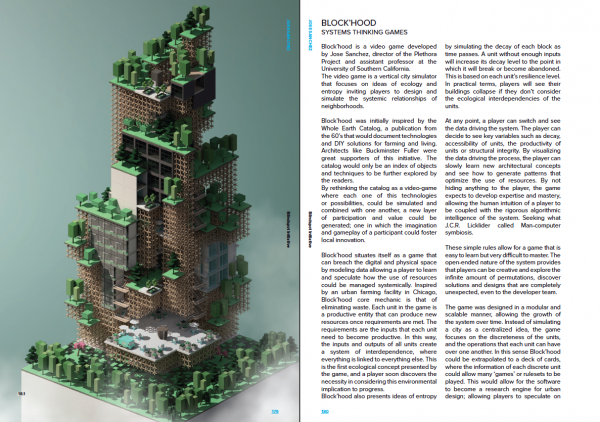The Blindspot Initiative: Design Resistance and Alternative Modes of Practice
Jose Sánchez
eVolo Press
Hardcover
238 pages
The Blindspot Initiative: Design Resistance and Alternative Modes of Practice documents the professional work of twenty-one design practices that are expanding their respective fields and hybridizing traditional design outputs through the intersection of other disciplines. The expansion of architectural and design practices toward the domain of robotics, material science, film, simulation, or software, redefine the skillsets required to engage with a creative output that challenges the conventions of established domains.
All practices curated in this volume, propose an autonomous approach towards design research, resisting the pervasive design competition model that requires free labor and speculative remuneration. The critique of such a model is present throughout this volume, rejecting the wasteful discarding of immaterial labor that is commonplace in the ‘winner takes all’ paradigm that currently dominates the design marketplace.
The hybridization of practice has, in many cases, aided a creative business proposition, one that seeks to engage not only through its final output but also through reconsidering the means of production. By blurring the boundaries between fields, design innovation can become more aware of the systemic interdependencies that often live in our current disciplinary blind spots.
The Blindspot Initiative, in its first incarnation as an exhibition in Los Angeles, was the result of a collaboration between Jason King, Biayna Bogosian, Sacha Baumann, and Jose Sanchez, to explore the space of self-financing and self-commissioning of new creative work. From the critique of competitions, The Blindspot Initiative attempts to create an alternative loop between design and resources, one in which the propagation and documentation of new knowledge developed in design research can economically sustain its production, generating a positive feedback loop between innovation and knowledge propagation.
Texts by Jenny Wu, Jason Kelly Johnson, David Gerber, Mustafa El-Sayed, and Kate Davies, introduce the designers by offering alternative perspectives on the contributions of the field of robotics, software, film, product design and prototype thinking, to the practice of architecture.
Each chapter presents work at the edge of the architectural discipline either coming from inside the discipline or approaching it from the outside. In purposefully attempting to expand the boundary of architectural practice, this volume aims to offer new avenues for students and young designers to expand the imagination of architecture and reject unethical practices that have become commonplace during the first years of practice.




























